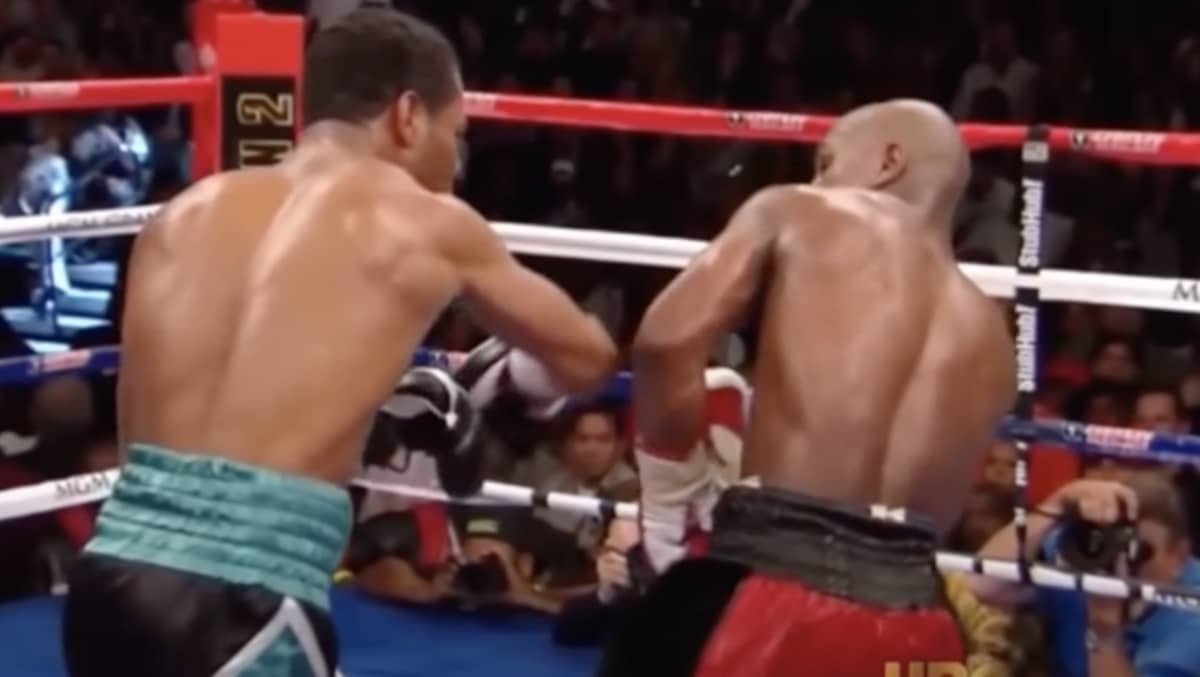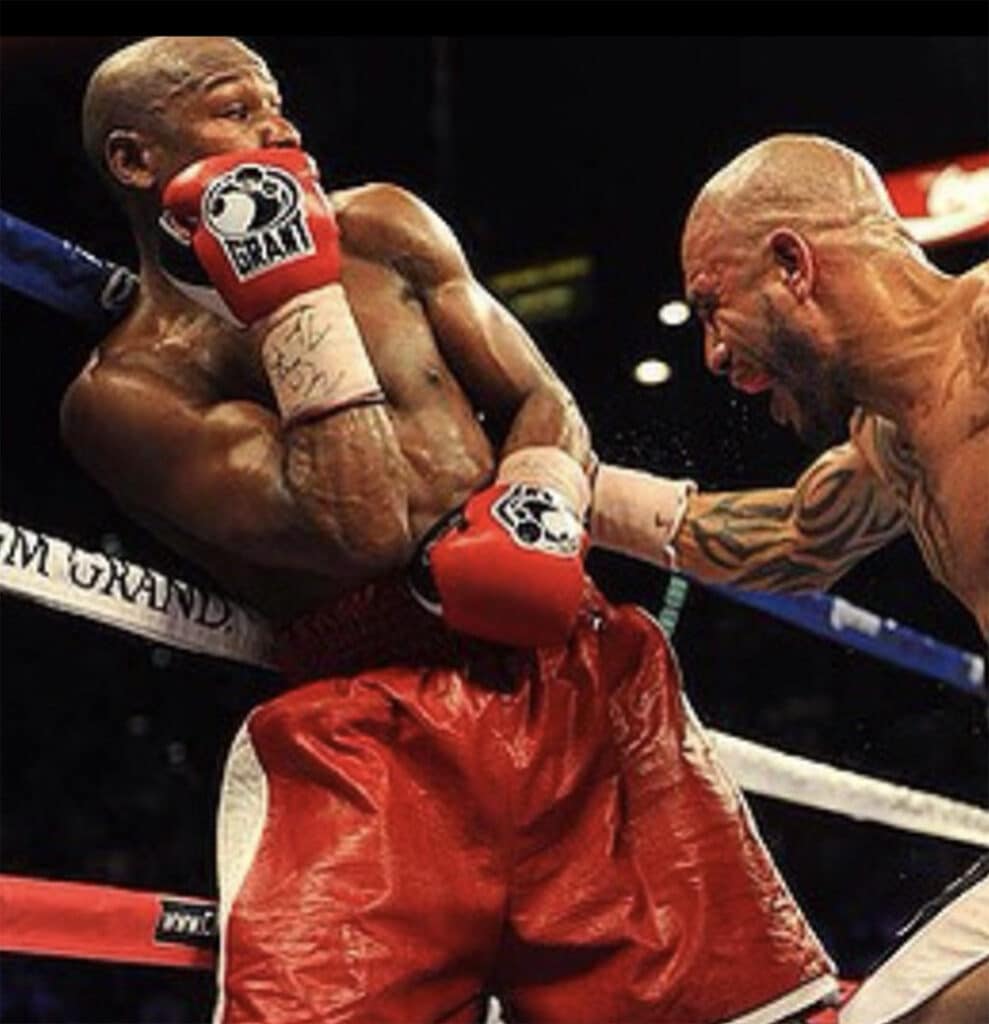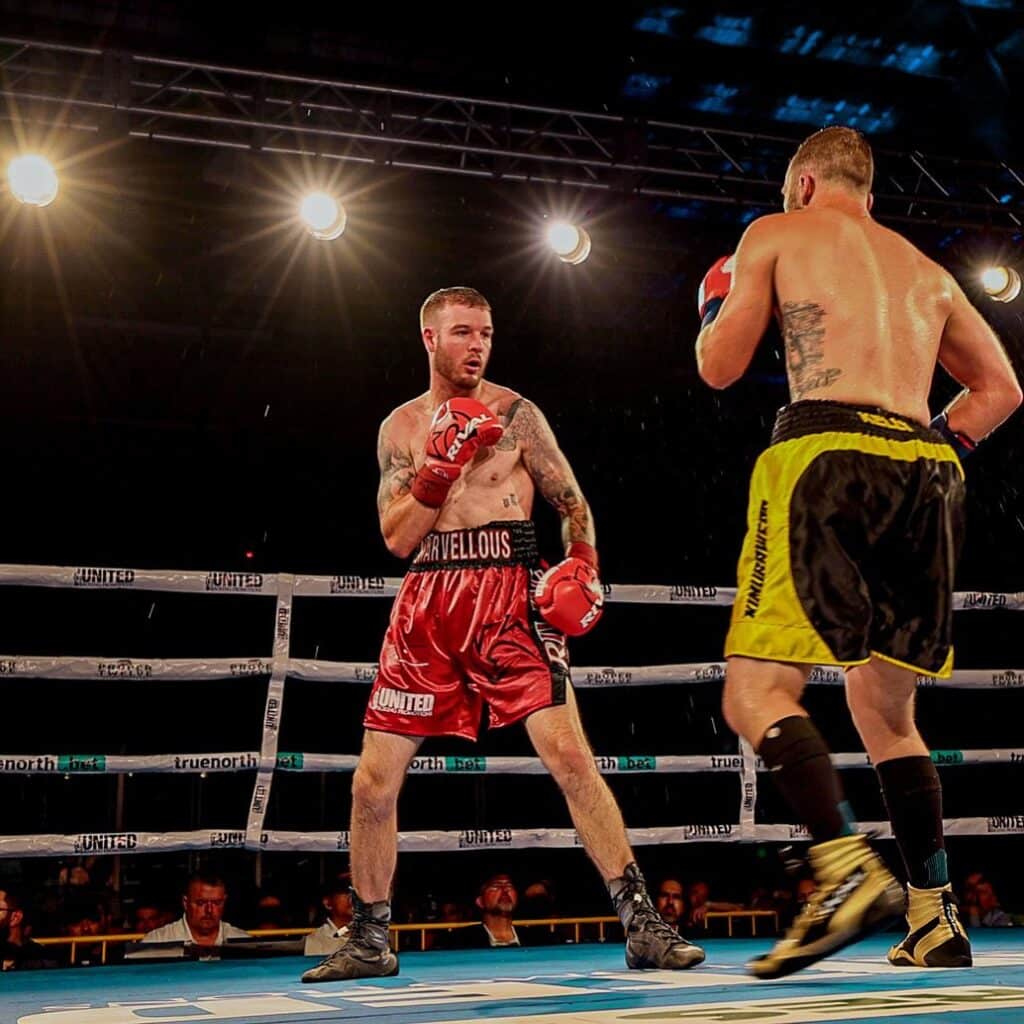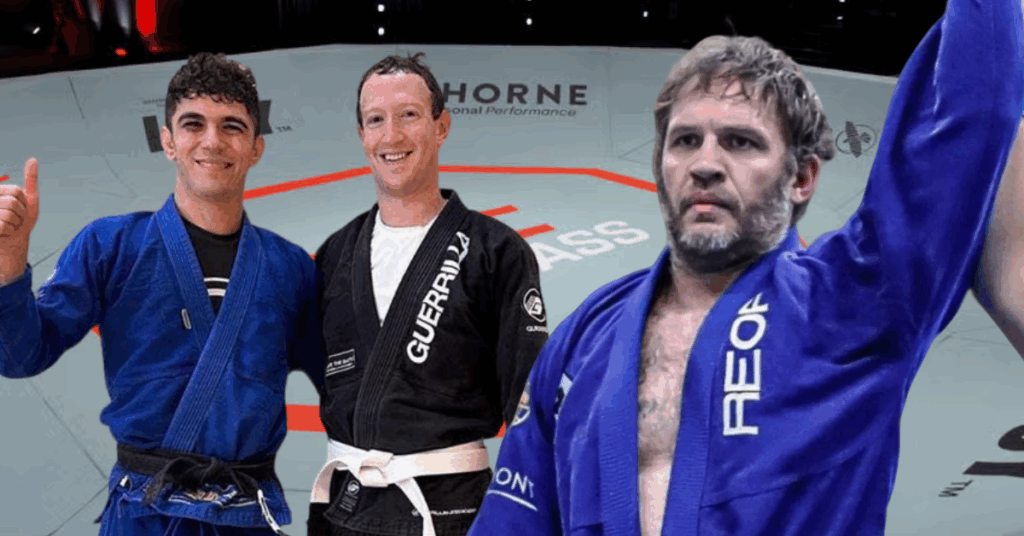What is the Philly Shell defense in Boxing?

The Philly shell defense is one of the best high level guards used within boxing. Some of the best boxers to ever step in the squared circle used the Philly shell defense to win world championships.
Here is what you need to know about the Philly shell defense. We’ll go over the history of the guard, famous boxers that used the Philly shell, and cover techniques using the guard.
What is the Philly Shell Defense?
The Philly shell defense is a defensive style predominantly used by counter punchers in boxing. This guard was developed by top ranked Philly native George Benton, who was a top ranked middleweight during the 1950s.
Benton was considered one of the most technical fighters of his era and one of the best to never win a title. He became an even better trainer and taught his guard to some of the best boxers ever.
Through his fighters like Pernell Whitaker, the Philly shell became a popular guard used by great defensive fighters.
This style of boxing guard widely differs from traditional boxing guards that are taught to boxers. In a Philly shell guard, you stand more sideways with your lead hand across your body and back hand up.
Your lead shoulder is also lifted a little higher with your head back. Connecting all of these parts of the guard together creates sort of a shell, where the guard gets his name.
It’s an advanced style of boxing guard that requires solid fundamentals before using and a keen sense of range. All time great boxers like Bernard Hopkins and Floyd Mayweather have used the Philly shell defense to win numerous titles.

Famous Fighters That Used The Philly Shell Defense
After the Philly shell defense was popularized during the 1980s, high level boxers began adopting this style of boxing guard. Here are some of the most notable world champion boxers that became legends using the defense.
Bernard Hopkins
Bernard “The Executioner/Alien” Hopkins had one of the longest and prolific boxing careers in the modern era. He learned how to box while he was incinerated in his late teens and started his boxing career upon being released.
Hopkins would have a career that spanned over 4 decades. One of the main reasons for his longevity in boxing was his use of the Philly shell.
Throughout his career, Hopkins used the Philly shell defense to avoid damage from powerful strikers like Roy Jones Jr. All while delivering his own damage as he won world titles in two divisions and won 32 fights by KO.
James Toney
James “Lights Out” Toney is one of the most feared strikers in the history of boxing. He would set up his powerful right hand by mainly using the Philly shell defense.
Favoring to entice his opponents into an in close dog fight by making traps to get them to come forward. He would shoulder roll, slip, duck, and angle to land his trademark right hand.
Once Toney found the range and hit his opponents with his counters, he would look to take his opponents out quickly. Lights Out’s shell and power enabled him to win world titles in three weight classes during his 9 fight career.
Pernell Whitaker
Pernell “Sweet Pea” Whitaker is one of the boxers considered to have some of the best defense in the sport’s history. Nobody could read the range of his opponent’s like Whitaker.
He was the protege of the Philly shell creator George Benton, who helped popularize the guard during the 1980s and 1990s. Sweet Pea was a master of range and would put on unbelievable defensive displays in his fights.
Whitaker would evolve the Philly shell and use it to win Olympic gold and world titles in three weight classes.
Floyd Mayweather
We can’t talk about the Philly shell without mentioning one of the GOATs of boxing in Floyd Mayweather. After breaking his hands early in his career, Money Mayweather would become more of a defensive fighter.
Adapting his own version of the Philly shell defense that proved to be nearly impenetrable. In his career, nobody could figure out Floyd’s shell, which helped him go undefeated in his career.
How to Stand in the Philly Shell Stance
The Philly shell defensive stance has important details you must know when learning this style of boxing guard. Here are the details for how to stand in the Philly shell stance.
Hand Placement
The hand placement in the Philly shell is vastly different from a traditional boxing guard. Your front hand lowers and hugs across your midsection.
Having your front hand down goes against the principles of boxing, but this is used as a bait for your opponent.
Then your back hand is placed under the center of your chin facing outward towards your opponent. The reason for your hand being like this is to enable you to catch straight punches.
Tuck Chin Behind Shoulder
The next part of the Philly shell is tucking your chin behind your lead shoulder. Since your front hand is down, you have to hide your chin behind your shoulder in the shell.
Stand Sideways
Feet placement is the final part of the Philly shell that many boxers learning the defense often overlook. In the Philly shell defense, you have to stand more sideways than a normal boxing stance. Having the shell guard along with standing, semi-sideways takes away targets for your opponent to hit.
The Positives of the Philly Shell Defensive Guard
There are many reasons why top boxers adopt the Philly shell defense as their guard of choice in boxing. Here are some of the benefits of using this boxing guard.

Less Openings
The guard is called a shell, because you’re literally making a shell around the vital parts of your body. By standing sideways, while your lead hand protects your body, the back hand protects your chin, and your shoulder protects your head.
This shell limits the targets for your opponent to strike. Forcing them to work harder to create openings and avoid your counter strikes.
Powerful Counters
Doing slips and shoulder rolls in the Philly shell puts you in the perfect position to counter your opponent. When your opponent comes forward and you lean away to avoid their punch, your back hand is already locked and loaded.
All you have to do is let it go and drive a powerful shot into your opponent. Everything from straights, uppercuts, and back hooks can be used to hurt your opponent and keep them off balance.
Clear Vision
The problem that some boxers have with traditional guards is that they can block your vision. This is a problem as usually the punches that hurt you are the ones you don’t see coming.
But with the Philly shell defense, you have a clear vision of your opponent. You can see their attacks coming and be better prepared to defend them.
Snapping Jabs
Since your lead is down across your body, this allows you to throw more powerful snapping jabs. When you throw punches with your lead hand down like this, you’re literally shooting punches from your hip.
Doing this creates more powerful lead hand punches, but you still have to be careful. Your lead hand is still down, which your opponent will try to use against you.
Important Tips For Using the Philly Shell Defense
The Philly shell is a great guard to use in boxing, but can go horribly wrong if you don’t get the details right. Remember these important tips when using the Philly shell.
- Lead Foot Alignment: When in the shell, you need to keep your lead foot aligned with your opponent’s lead foot. Doing this ensures that the open side of your body is closed off, so they can’t hit you there.
- Lead Hand Placement: Your lead hand is hugged across your body and not dangling at your hip. You can throw quick jabs doing this, but your body is open to get hit.
- Tuck Your Chin: Keep your chin tucked and lead shoulder up in the Philly shell. Your opponent will have free shots at your face if your shoulder isn’t up with your chin tucked behind it.
- Don’t Stand Square: Never stand square with your opponent when trying to use the Philly shell. You have to be standing semi sideways in order to create the shell.
- Head Back: In the shell, always try to keep your head back and never lean forward.






